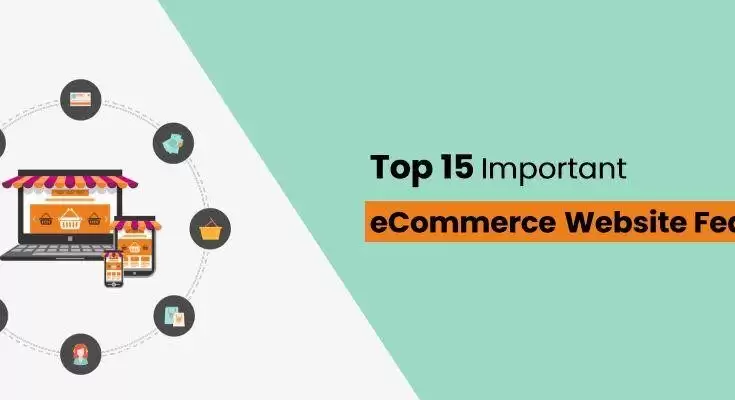As technology continues to evolve, so do the needs of businesses and their customers. It’s essential for business owners to be informed of the trends and requirements for a successful ecommerce website in 2024. Have a look at some interesting facts about ecommerce:
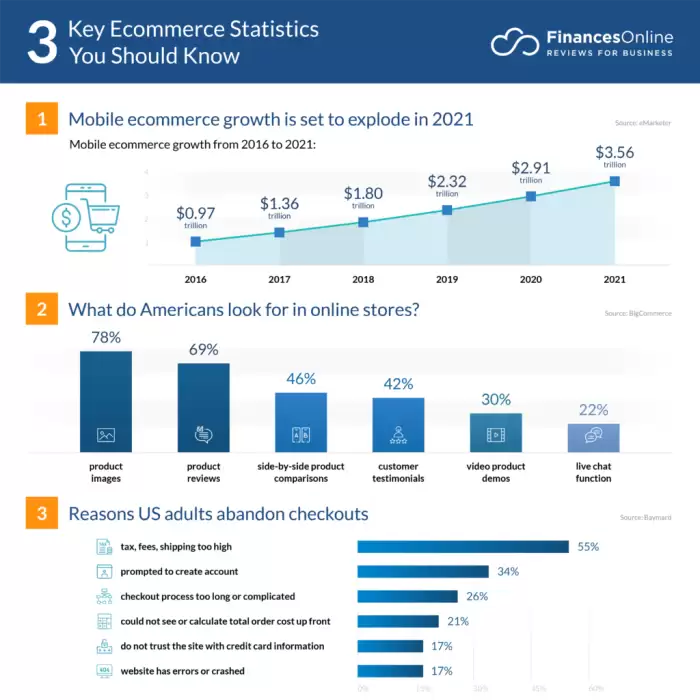
This post offers insight into 15 must-have features that can help ensure your website stands out from the competition. Keep reading to learn which features are essential and why they’re so important!
1) Mobile-First Design
To keep up with modern trends, it’s essential for business owners to take a mobile-first approach when designing their ecommerce websites. After all, more than half of all ecommerce website visits are made from mobile devices. To ensure a frictionless and enjoyable user experience, the size of the screen, font size, and layout must be taken into consideration.
To that end, a simple, single-column design is often recommended. Additionally, images and call-to-action buttons should be large enough to be clearly visible on smaller screens. Finally, the website should be tested on multiple devices to ensure its proper functionality and appearance. With these steps, business owners can be sure their websites provide a consistent and optimal experience regardless of device.
2) Quick Page Load Times
Having a fast-loading ecommerce website is paramount for customers to have a positive experience. Page load times that are slow lead to decreased user engagement and conversions. Therefore, to increase your website’s loading time, it’s beneficial to minify code, optimize images, and implement caching solutions.
Also, investing in Content Delivery Networks (CDNs) will enhance the speed of content delivery and reduce latency regardless of location. Put the effort into improving page load times and customers will be satisfied with the ecommerce website experience.
3) Easy Navigation
Having a streamlined and well-designed website is critical for any ecommerce business. Without one, customers won’t be able to find what they are looking for and might leave your site entirely. Easy navigation allows customers to access products and services quickly, increasing their chances of making a purchase.
To enable simple navigation, a main menu with dropdown menus and subcategories is essential. It’s also helpful to include a search box at the top of the page, which will make it easy for customers to find what they need. By incorporating internal links throughout your website, customers will be able to discover related products and content.
Utilizing breadcrumbs is another excellent way to help customers navigate. They enable customers to quickly go back to the page they were just viewing, or move back up to a higher-level category.
An intuitive and user-friendly navigation system is an absolute must-have for any ecommerce website in 2021. By providing customers with easy access to the products and services they are looking for, you can boost customer satisfaction, decrease bounce rate, and elevate conversion rate.
4) Search Functionality
Having a successful ecommerce website is contingent on customers being able to quickly and easily find what they are searching for. Consequently, enhancing search capabilities is an integral objective for the year 2023. A powerful search tool that offers accurate results is imperative. In order to reach optimal customer satisfaction, ensure your search tool provides relevant results without delay.
Furthermore, you may consider introducing a “did you mean” option, as it suggests suitable results for words not found in the actual product name. Moreover, adding a filter feature that allows customers to search by category or brand is a wise idea.
Also, predictive search, often called autocomplete, can be implemented to show suggested outcomes as the customer is inputting their query in the search box; hence making it easier for them to locate the desired item without needing to write the complete product name.
5) Customer Reviews and Testimonials
As a business owner, the utilization of customer reviews and testimonials can be a major asset for an ecommerce website. By offering positive feedback from clients, businesses can foster trust and credibility amongst prospective customers. Furthermore, customer reviews are a powerful way to convince buyers to buy from your website, as it allows them to hear from previous purchasers and receive assurance that the product is of satisfactory quality.
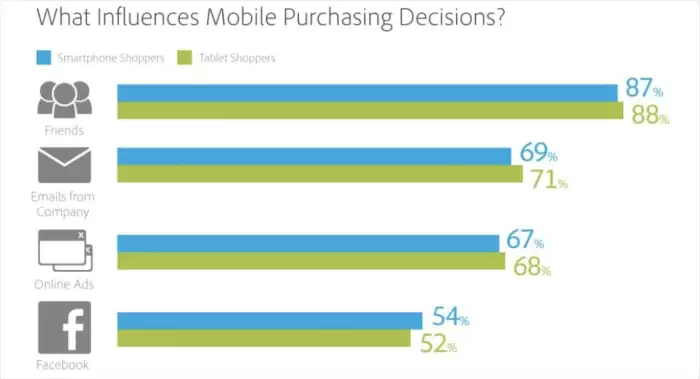
Additionally, testimonials show potential buyers that real people are using and vouching for your products, which instills trust in them and leads to a more informed buying decision. When it comes to collecting customer reviews and testimonials, make sure to include relevant details, such as the customer’s name and product they purchased, as well as a range of both positive and negative reviews to give an accurate picture of the shopping experience.
Utilizing customer reviews and testimonials can be an excellent way to boost sales and retain customers, making it a must-have feature for any ecommerce website in the year 2023.
6) High-Quality Product Images
It’s evident that product images of the highest quality can either make or break a sale. Consequently, as we head into 2023, it is now more imperative than ever for businesses to allocate funds towards visuals that draw potential buyers and make products irresistible.
This includes comprehensive shots of the items for sale, along with other supplementary perspectives or close-up images. Pictures of exceptional quality, where the color is sharp and professional-looking, is indispensable for any ecommerce site in the current climate.
If you’re unsure of where to start when it comes to achieving quality product images, purchasing a dependable camera and learning its proper use is a great starting point. If you’d rather avoid making any capital outlays, it is also possible to source stock photos online. Just make sure that the visuals are consistent with your brand and do not disrupt customers from taking the plunge.
No matter if you shoot your own pictures or locate stock visuals, product images of excellent caliber are absolutely necessary for any ecommerce site in 2023. It is thus recommended that you focus on creating the most appealing visuals for your store, and this should put you well on your path to success.
7) Clear and Concise Product Descriptions
For businesses that operate in the ecommerce space, product descriptions are a necessity. These descriptions provide customers with the essential details needed to make informed purchasing decisions. As we move into 2023, customer expectations require easy access to relevant information that is quickly accessible and comprehendible.
In order to create descriptions that resonate with customers, jargon and industry-specific language should be avoided in favor of more simple terminology. Additionally, descriptions should remain succinct and refrain from providing extensive product histories.
Moreover, the incorporation of relevant keywords into product descriptions can benefit your SEO and make your products easier to find. Lastly, include technical details such as accurate measurements, sizes, and other pertinent information that customers must have prior to purchase.
By providing clear and concise product descriptions, businesses will improve the customer experience and positively influence sales outcomes.
8) Multiple Shipping Options
Offering a selection of shipping options is an essential requirement for ecommerce websites. Customers prefer to be able to pick the shipping method that meets their requirements. Consider options like expedited shipping, flat rate shipping, and free shipping. Also, it is crucial to provide clear information on estimated delivery dates for each option and include accurate tracking data for customers.
While availingRetail Industry Software Solutionsin the UK,providing international shipping is a good idea to increase reach and sales. Keep in mind international shipping regulations and customs protocols to ensure products reach their destinations. When customers make purchases, it is necessary to display the shipping costs and expected delivery dates, along with correct tracking data. Multiple shipping options are a great way to increase sales and make customers happy in 2023.
9) Secure Checkout
The checkout process is essential for any ecommerce website; this is where customers enter their payment information and complete their transaction. In order to build trust with customers and have a positive checkout experience, it is imperative to secure the checkout process.
To guarantee security, you can use an SSL certificate, which encrypts information sent between the customer and your website, and also make use of a Payment Card Industry Data Security Standard (PCI DSS) compliant payment gateway, such as PayPal or Stripe.
Furthermore, it ensures your checkout is user-friendly and simple to navigate. It also gives customers multiple payment options and makes sure they are aware of how long it will take to process and deliver their order. Moreover, include contact information in case they need help or have queries. Ultimately, by making sure your checkout is secure and effortless, you can increase customer trust and sales.
10) Live Chat Support
Having a live chat support feature is an essential element for ecommerce websites. It is the perfect solution for customers who are looking for quick and convenient communication with customer service representatives. Moreover, it helps create a more personalized customer experience, as well as building customer loyalty as customers can be sure that their issues are being taken seriously.
In addition, it helps businesses become more efficient when dealing with customer inquiries, as well as reducing costs related to traditional customer service channels such as phone support.
In most cases, live chat is incorporated with AI chatbot technology inShopping Cart Developmentthat allows companies to have automated responses that cater to customers’ needs available 24/7. Therefore, businesses can be certain that customers are always given the best experience when visiting their ecommerce websites with the help of live chat support.
11) Abandoned Cart Recovery
In today’s digital world, abandoned carts are a serious problem for ecommerce businesses. Studies have shown that a staggering 68% of online shoppers leave items in their carts without completing the purchase. Fortunately, abandoned cart recovery strategies can help tackle this issue.
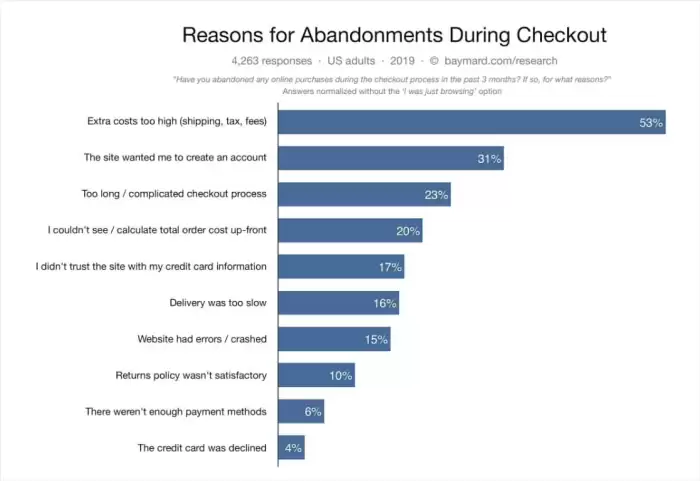
These strategies provide ecommerce stores with the ability to remind customers of their left-behind items and encourage them to complete their purchase. Companies can use a combination of tactics, such as email campaigns and remarketing, to increase the likelihood of recovering lost sales.
For instance, businesses can send emails and push notifications to customers, with incentives such as discounts and free shipping, to persuade them to complete the transaction. Additionally, product recommendations can be included in the messages to help customers find the ideal product.
When businesses adopt an abandoned cart recovery feature, it can result in up to 30% of sales being recovered and revenue increases. Therefore, this is an essential strategy for ecommerce websites in 2023.
12) Personalization
Personalization is a key element that is rapidly becoming more and more crucial for ecommerce websites. This type of feature allows customers to have a personalized experience and have their requirements met. Using AI-driven algorithms, information can be collected on user behavior and preferences in terms of products or services and utilized to develop a one-of-a-kind experience. Some of the ways to leverage personalization are with customized discounts, suggestions of relevant items or services, and personalized customer service.
By offering personalization, business owners can generate customer loyalty and possibly higher conversion rates since shoppers are more likely to buy when they feel that the website is tailored to their preferences. Furthermore, it can reduce shopping time for customers since the most pertinent items or services are already featured for them.
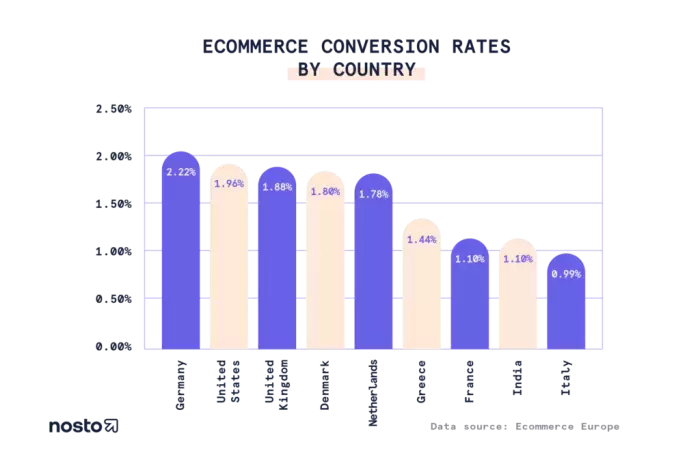
Ultimately, personalization is becoming an imperative aspect of any ecommerce website in 2023, since it permits them to offer their customers an improved experience, thereby likely resulting in more sales.
13) A/B Testing
In 2023, A/B testing should be a central component of any ecommerce website’s optimization process. This testing technique splits visitors into two groups and displays a distinct web page version to each.
By carefully tracking results, the page that proves to be more successful can be identified and improved upon accordingly. Through A/B testing, companies are able to compare the performance of elements like headings, photos, colors, and design schemes to uncover the ideal combination for offering customers a truly optimal experience.
14) Heatmaps
Heatmaps are a powerful and highly beneficial tool for ecommerce websites. Availing heatmaps inRetail IT Solutionsgivesan understanding of user activity, highlighting what works and what could be improved upon. By monitoring website visitor behavior, heatmaps offer insight into where optimization and conversion opportunities lie.
Heatmaps provide information on how users are interacting with your website, such as clicks, scrolls, and hovers. This data is visualized to reveal areas of potential improvement. For instance, if your heatmap data suggests that people aren’t scrolling down enough on product pages, you can optimize content below the fold to encourage engagement.
Additionally, heatmaps can help you spot areas of confusion, offering insight into where users may be having trouble navigating your website. By recognizing where visitors get stuck, you can make necessary changes to ensure they get the information they need.
In summary, heatmaps can give business owners a deep understanding of how users are interacting with their website. This data can be used to optimize your ecommerce website for the best results.
15) Google Analytics Integration
Google Analytics is an essential tool for ecommerce businesses and it is being integrated by manyshopping cart development companies. It offers a comprehensive range of data and insights into customer behavior, empowering business owners to make informed decisions about the performance of their websites.
With Google Analytics, you can monitor vital metrics like page views, time spent on each page, and conversions. You can also use it to understand customer demographics and the customer journey through your website.
Integrating Google Analytics with your ecommerce site is a must if you want to understand the performance of your business. By connecting to this powerful analytics tool, you’ll gain access to invaluable insights into how your customers are engaging with your site, where they’re coming from, and what areas could use improvement.
Armed with this data, you’ll be able to make data-driven decisions and accurately allocate your marketing budget to the channels and campaigns that are delivering the best returns.
Google Analytics makes it easy to measure the success of your marketing campaigns, too. By tracking customer behavior across different channels, you’ll know exactly which ones are performing well and which ones require some tweaking.
By taking advantage of the wealth of insights available from Google Analytics, you can ensure that your business remains competitive and successful in 2023 and beyond.
Conclusion
Forecommerce companiesto remain successful in the year 2023, staying up-to-date with the most current ecommerce website trends is essential. Adopting mobile-first design, integrating Google Analytics, and investing in the right resources are crucial to increasing customer satisfaction and boosting sales.
These aspects will help your ecommerce website outshine competitors, enabling it to become a leader in the industry in 2023. Also, Custom Shopping Cart Development in the UKhelps you integrate all these features easily in your ecommerce website.
Frequently Asked Questions
Q: What Is Mobile-First Design?
Ans:Mobile-first design is a method of website development that prioritizes mobile users by initially constructing the website for their particular devices. It is designed to make sure the user experience is excellent and to offer an optimized user interface for mobile users.
Q: How Do I Improve Page Load Times?
Ans:Enhancing page load times can be achieved through optimizing images, decreasing HTTP requests, allowing browser caching, minifying HTML, CSS and JavaScript files, and compressing the website’s files.
Q: What Is the Purpose of Customer Reviews?
Ans:Customer reviews are an outstanding way to cultivate trust with possible customers and boost sales. They provide customers with the opportunity to read real comments from people who have previously purchased a product or service from your business.
Q: What Are Heatmaps?
Ans:Heatmaps are visual representations of user interactions on webpages. They permit webmasters to get an idea of how their visitors interact with their website, what content they pay attention to the most, which buttons or links they press and more.
Q: What Are Abandoned Cart Recovery Strategies?
Ans:Abandoned cart recovery strategies are methods that online businesses use to recover potential sales by connecting with customers who left items in their shopping carts without finishing the purchase. Strategies such as customized emails, retargeting ads and coupons can help persuade customers to complete their purchase.
Q: What Is A/B Testing?
Ans:A/B testing, also known as split testing, is an activity of operating two versions of a webpage simultaneously to compare results and identify which version works better. It is used to improve conversions and determine the most successful version of a page for higher involvement and sales.
Q: What Is Google Analytics Integration?
Ans:Google Analytics integration allows webmasters to track user behavior on their website, including page views, bounce rates, time spent on site and more. This information can then be employed to optimize website content and design for amplified user involvement and conversion rates.
